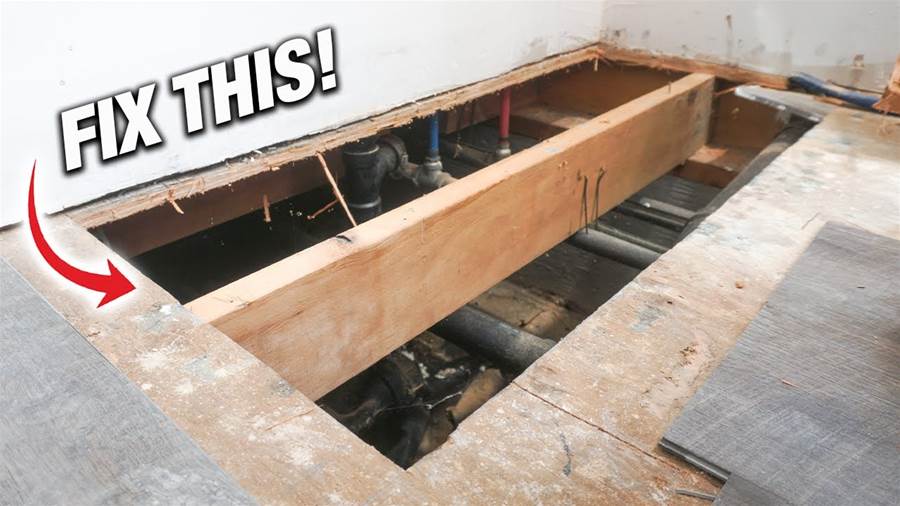

This article provides a step-by-step guide for beginners on how to remove and replace rotten subfloors. The main idea is to help DIY enthusiasts tackle this task with confidence.
The first step is to identify and locate the rotten subfloor. Signs of rot may include sagging, soft spots, or a musty odor. Once the rotten area is identified, it is important to determine the extent of the damage and whether it is isolated or widespread.
Next, gather the necessary tools and materials to complete the job. These may include a circular saw, pry bar, hammer, chisel, utility knife, safety goggles, gloves, knee pads, replacement subfloor material, and construction adhesive.
Before starting, ensure the surrounding area is cleared and protected. This includes removing furniture, appliances, and any obstacles that may hinder the process. Then, disconnect any electrical or plumbing connections that may run through the subfloor, ensuring safety and preventing damage.

With safety gear on, carefully begin removing the damaged subfloor. Start by cutting along the edges of the rotten area using a circular saw. Take caution to avoid cutting into any joists or other structural components.
Once the perimeter is cut, use a pry bar to carefully lift and remove the damaged boards. If necessary, use a chisel and utility knife to further remove any smaller sections that are still attached.
After the damaged subfloor has been removed, thoroughly clean and inspect the area. Ensure it is dry, clean, and free from any remaining debris or old adhesive. This will provide a suitable surface for installing the replacement subfloor.
Next, it is time to measure and cut the replacement subfloor material. Use the old subfloor as a template, accounting for any necessary adjustments. Cut the replacement material to size, ensuring a snug fit.
If necessary, make smaller adjustments to ensure a proper fit. Apply construction adhesive along the perimeter and on the joists. Carefully install the replacement subfloor, pressing it firmly into place.
Once the replacement subfloor is secure, allow ample time for the adhesive to dry and cure. This time may vary depending on the specific product used. Once dry, the new subfloor should be ready for further installation, such as laying new flooring.
In conclusion, this article serves as a beginner's guide on how to remove and replace rotten subfloors. By following these steps and taking the necessary precautions, DIY enthusiasts can successfully tackle this task.
Remember to prioritize safety, gather the required tools, accurately measure and cut the replacement subfloor, and allow ample time for drying and curing. With these guidelines, replacing rotten subfloors can be accomplished with confidence.
